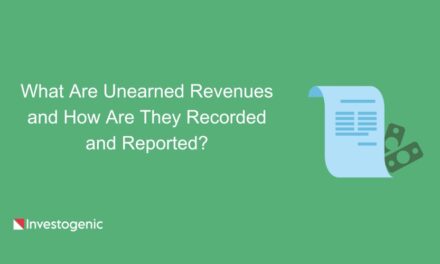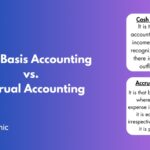
Residual Income: What Is It and How Can It Be Made?

Residual income is a valuable concept for achieving financial freedom and security. If you looking for ways to earn money consistently without actively working for it? Residual income might be the solution for you.
However, it’s important to note that generating substantial residual income often takes time, patience, and careful planning.
This income can be a key component of financial freedom and wealth-building. Learning about this concept can help improve your financial planning abilities and develop your knowledge of common accounting practices. In this post, we will explain residual income, its types and examples, and how you can build your own residual income stream.
Residual Income
Residual income refers to the income a person or business receives from an asset after paying all its operating expenses and loan payments.
The benefit of residual income is that it continues to be earned on a regular basis with little or no active effort or direct involvement. This type of income is generated from assets or activities that require an initial investment of time, money, or effort but continue to earn over time without continued, active participation.
Generating residual income can provide financial stability and the possibility of financial freedom because it continues to flow in even when you are not actively working. This can be a powerful way to build wealth, achieve financial freedom, and create a more secure financial future. Examples of residual income include rental income, interest income, artist royalties, and dividend payments.
The term residual income is also used in different ways for different situations, such as in the context of personal finance, where it refers to an individual’s discretionary income. Discretionary income refers to the amount of money left after paying all personal debts and obligations. When we look at it in terms of corporate finance, residual income is a measure of corporate performance that reflects the total income generated after paying all relevant capital costs.
Characteristics of Residual Income
Here are some key points to understand about residual income:
- Passive Involvement: Residual income streams don’t require you to actively work for every dollar you earn. While some initial work or investment is often required, income continues to flow in without constant supervision or active effort.
- Diverse Sources: Residual income can come from various sources, including real estate investments, dividend-paying stocks, royalties from intellectual property, interest from loans or investments, affiliate marketing, network marketing, and more. Diversifying your sources of residual income can reduce risk.
- Financial Stability: Residual income provides a level of financial stability because it can continue even when you face unexpected expenses, job loss, or other financial challenges. It can act as a safety net or supplement your regular income.
- Time Freedom: One of the primary benefits of residual income is that it can free up your time. As your income streams become more self-sustaining, you have more flexibility to pursue other interests, spend time with family, travel, or engage in other activities you enjoy.
- Wealth Building: Residual income can be a significant tool for building wealth over the long term. By consistently reinvesting or saving the income generated, you can accumulate assets and achieve financial goals.
Types of Residual Income
There are two main types of residual income: personal residual income and corporate residual income. Personal residual income is generally associated with individual income streams, and corporate residual income is generally associated with income streams for businesses or corporations.
Personal Residual Income
Personal residual income refers to the income that an individual continues to earn without the need for continued active participation. This kind of residual income is frequently linked to passive income sources like stock dividends, rental income from investment properties, and royalties from intellectual property.
Example:
- Rental income from investment properties: Once the property is rented out, the landlord receives recurring rent payments without having to be actively involved.
- Dividend income from stocks: Once you invest in a dividend-paying stock, you continue to receive dividends without the need for continuous active participation.
Corporate Residual Income
Corporate residual income refers to the income that a corporation continues to earn without the need for continued active participation. This type of residual income is often tied to investments in other businesses or properties.
Example:
- Rental income from properties: Once property owned by the corporation is rented out, the corporation continues to earn continuous rental income without the need for continued active participation.
- Dividend income from stocks of another company: Once a corporation invests in the dividend-paying stock of another company, it continues to earn residual income without actively participating in the operations of the other company.
Examples of Residual Income Sources
- Real Estate Investment: Investing in real estate can generate passive income through rental income, capital gains from property appreciation, and potential tax benefits. Investing in real estate can be a long-term strategy that requires initial capital and ongoing management but can also provide significant returns over time.
- Dividend-paying Stocks: Dividend income is derived from owning shares of dividend-paying stocks. Companies distribute a portion of their profits to shareholders in the form of dividends, typically on a quarterly basis. Investors can accumulate dividend income by holding onto their shares.
- Interest Income: Lending money or making investments in assets that pay interest are two ways to make interest income. This can include interest from savings accounts, certificates of deposit (CDs), bonds, or peer-to-peer lending platforms.
- Intellectual Property: Royalty income is generated by licensing intellectual property rights, such as patents, copyrights, trademarks, or royalties from creative works like books, music, and art. Creators and inventors receive payments for the use of their intellectual property.
- Peer-to-Peer Lending: By participating in peer-to-peer lending platforms, individuals can lend money to borrowers in exchange for interest payments. The interest income is a form of passive income generated from the loans.
How to Make Residual Income
To create and maintain residual income:
- Invest Wisely: Research and choose income-producing assets or opportunities that align with your financial goals and risk tolerance. Many forms of residual income require an initial investment of money, time, or effort. For example, you might need to buy a rental property, invest in dividend-paying stocks, or create a valuable piece of intellectual property.
- Build and Maintain: Once you’ve made the initial investment, you need to build and maintain the income-generating asset or activity. This may involve marketing your rental property, managing your investment portfolio, or promoting your intellectual property.
- Automate or Delegate: To truly create residual income, you’ll want to automate or delegate as much of the work as possible. For example, you can hire a property management company or an agent to handle rental property management or use automation tools for affiliate marketing.
- Build and Automate: Once you’ve made the initial investment, you need to build and maintain the income-generating asset or activity. This may involve marketing your rental property, managing your investment portfolio, or promoting your intellectual property. Initially, you may need to put in significant effort to set up the income source but aim to automate or delegate tasks to reduce your active involvement over time.
- Diversify: Consider diversifying your income streams to spread risk and increase stability. Having income from multiple sources can provide greater financial stability.
- Monitor and Adjust: Continuously monitor the performance of your income sources and make adjustments as needed to optimize returns.
How to Calculate Residual Income
The formula below must be used to determine residual income:
Residual Income = Net Operating Income – (Minimum Required Return X Cost of Operating Assets)
Here’s what each of these terms means:
- Net Operating Income: You must first establish the net operating income (NOI) of an investment or company in order to compute residual income. Net operational income is the amount left over after all operating costs have been paid from a business or investment. This includes any income derived from sales, rentals, or other sources less any outgoing costs like salaries, rent, or supplies.
- Minimum Required Return: Calculate the minimum necessary return (MRR) after determining the net operating income. The rate of return that investors or owners anticipate receiving on their investment is known as the minimum needed return. This varies according to the industry, the company’s financial success, and other criteria, and is often dependent on the risk involved with the investment or business.
- Cost of Operating Assets: Finally, you need to determine the cost of operating assets, which includes the total amount of capital invested in the business or investment. This can include assets such as property, equipment, and inventory.
By calculating residual income, you can determine profitability and potential value. Your calculated residual income can be positive or negative, which also has different meanings. As:
- Positive Residual Income: The investment or business provides revenue above and beyond the minimum required return if the residual income is positive. This shows that the firm or venture is successful and might be a solid investment option.
- Negative Residual Income: If the residual income is negative, the business or investment is not producing enough money to pay for the investment or keep running. To increase profitability and produce positive residual income, it might be important to review the investment or business strategy in this situation.
Example
We consider an example of real estate investing here. Real estate investors often use residual income to assess the profitability of a potential investment property.
For example, let’s say a real estate investor named Steve is considering buying a property to rent out. The property generates $150,000 in annual rent, and the total cost of the property, including the purchase price and any necessary renovations, is $1 million. Steve (a real estate investor) estimates that based on the cost of borrowing money and the risk level of the investment, the minimum required return for an investment is 10%.
To calculate the residual income for this investment, Steve will first determine the net operating income, which is the rental income minus any operating expenses such as property taxes, insurance, and maintenance costs. Let’s assume operating expenses are $30,000; then the net operating income for this property will be $120,000 per year ($150,000-$30,000).
Next, Steve will determine the cost of operating assets, which is the total cost of the property. Since the total cost of the property is $1 million, this is the cost of operating assets.
Finally, the investor would calculate the residual income using the formula:
Residual Income = Net Operating Income – (Minimum Required Return X Cost of Operating Assets)
Residual Income = $120,000 – (0.10 X $1,000,000)
Residual Income = $120,000 – $100,000
Residual Income = $20,000
In this case, the residual income is positive, meaning the investment is generating enough income to justify the minimum required return of 10%. Based on this analysis, Steve (the investor) may decide to purchase the asset.
Importance of Residual Income
Residual income holds significant importance for individuals and families in various aspects of personal finance and long-term financial planning. Here are some key reasons why residual income is important:
- Financial Security: The first and foremost importance that we see in residual income is that it provides a safety net and financial security. It can act as a cushion during unexpected expenses, emergencies, or periods of little or no active income. This financial stability can reduce stress and anxiety related to financial difficulties.
- Reduced Reliance on Active Income: Relying solely on a traditional job or active income source can be risky, as it is subject to factors like job loss, economic downturns, or health issues. Residual income reduces your dependence on a single income stream, making you less vulnerable to financial setbacks.
- Wealth Building: Residual income can be a key driver of wealth accumulation. It allows you to save, invest, and grow your assets over time. By consistently reinvesting or saving the income generated, you can accumulate wealth and work towards achieving your financial goals.
- Financial Independence: Residual income can help you achieve financial independence, which means having enough passive income to cover your living expenses without needing to work a traditional job. This freedom allows you to choose how you spend your time and pursue activities that you are passionate about.
- Retirement Planning: Residual income is crucial for retirement planning. It can supplement retirement savings and provide a consistent income stream during retirement. This reduces the risk of outliving your savings and ensures a comfortable retirement lifestyle.
- Passive Lifestyle: Residual income enables a more passive lifestyle. As you automate or delegate income-generating activities, you have more time to focus on personal interests, hobbies, or spending time with loved ones.
- Entrepreneurial Freedom: Residual income can result from entrepreneurial ventures, such as owning a business or investing in startups. It allows entrepreneurs the freedom to explore new business opportunities and take calculated risks.
- Peace of Mind: Knowing that you have income streams that do not rely solely on your active labor can bring peace of mind. It allows you to plan for the future with confidence, knowing that you have financial resources in place.
Conclusion
By building a residual income stream, you can better protect your financial future. By leveraging your skills, interests, and the power of technology, you can create a reliable source of passive income that can provide you with financial freedom and independence.
With patience, dedication, and smart financial planning, anyone can create a successful residual income source; all they need to do is get started.
FAQs
How Do You Get Residual Income By Borrowing Assets?
Generating residual income by borrowing assets usually involves a strategy called leverage. Leverage involves borrowing money or assets to invest in income-producing opportunities.
The idea is that you use borrowed funds or assets to maximize your potential returns so that you get returns that cover the cost of the borrowed asset and still leave you with a surplus. For example, let's say you want to buy a house. And you take out a mortgage to buy that house. By borrowing money from the bank here, you are essentially using leverage to buy an asset, which in this case is a house. You can earn rental income from home here. So you can pay the mortgage interest and maybe even save some. Over time, the value of your home may also increase.
Here's how you can get residual income by borrowing assets:
1. Understand Leverage: Before you start borrowing assets, it's crucial to have a solid understanding of how leverage works and the associated risks. Leverage can magnify both gains and losses, so it's not without risk.
What is leverage?
When one uses borrowed funds (debt) to fund the acquisition of assets in the hopes that the income from the new asset or capital gain will surpass the cost of borrowing, this is known as leverage.
2. Choose the Right Assets: Determine the assets you want to borrow against. Common options include real estate, stocks, bonds, or even cash. The choice of assets may depend on your financial goals, risk tolerance, and the availability of borrowing options.
3. Identify Borrowing Sources: To borrow assets, you'll need to find lending sources. These sources can include banks, financial institutions, online lending platforms, or private lenders. Each source may have its own terms, interest rates, and eligibility criteria.
4. Invest in Income-Producing Assets: Once you've borrowed the assets, you should invest them in income-producing opportunities. These could include:
- Real Estate: You can use borrowed funds to purchase income-generating properties, such as rental apartments or commercial buildings. Rental income from tenants becomes your residual income.
- Stock Market: Borrowing money to invest in dividend-paying stocks can generate dividend income. However, the stock market carries risks, so be cautious and diversify your investments.
- Bonds: Borrowed money can be used to invest in bonds that pay regular interest. The interest received is your residual income.
- Business Ventures: If you have a business idea or an existing business, you can use borrowed funds to expand or invest in projects that generate ongoing profits.
5. Manage Risks: Leverage can be risky, and there's always a chance that your investments may not perform as expected. To manage risks:
- Maintain a Margin of Safety: Ensure that your investments can cover the cost of borrowing, even in adverse conditions.
- Diversify: Spread your borrowed assets across different investments to reduce concentration risk.
- Stay Informed: Continuously monitor the performance of your investments and the terms of your borrowing arrangements.
6. Repay the Borrowed Funds: It's crucial to have a plan for repaying the borrowed assets. This may involve using a portion of the income generated to make loan payments or to accumulate funds for repayment.
7. Tax Considerations: Consult with a tax advisor to understand the tax implications of borrowing assets and the income generated from these investments. Tax laws can vary depending on your location and the type of assets involved.
8. Long-Term Perspective: Leverage for residual income is often a long-term strategy. It may take time for your investments to generate significant income, so be patient and maintain a long-term perspective.
The point to note here is that generating residual income through asset lending can be a powerful wealth-building strategy, but it also comes with risks. Making a well-thought-out plan, understanding the terms and conditions of your borrowing agreements, and staying informed about your investments is essential to making informed decisions.
Who can generate residual income?
Anybody can make a living through residual income, regardless of their job or sector. Making a residual income stream can be done in a variety of methods, such as buying dividend-paying stocks or rental properties, making and selling online courses, publishing books, or producing digital goods.
Identifying your skills and hobbies, selecting a residual income stream that fits with them, and then consistently taking action to develop and sell your product or service are the keys to creating residual income.
Anyone may achieve financial freedom and a sustainable passive income source with commitment, effort, and careful preparation.
When should you start creating a residual income stream?
Whenever you are going to create a source of income, the sooner you do it, the better it will be. The earlier you start, the more time you have to grow your income streams, and the more money you can potentially make over time. Here are some reasons why you should start creating a residual income stream as soon as possible:
- Time Factor: You must be aware that time plays an important role in earning money. Everyone must be aware of the power of compound interest; time plays an important role in it. The sooner you make any investment, the sooner you can withdraw returns from it. This implies that even little payments over time can add up to substantial sums.
- Diversity in income sources: You need to diversify your source of income. This will reduce your dependence on a single source of income. This can help reduce the risk of losing your income during a job loss, an economic downturn, or other unexpected circumstances.
- Freedom: Creating a residual income source can give you financial flexibility and freedom. This will enable you to follow your interests and passions without worrying about your financial situation.
- Retirement Planning: Creating a residual income source can be helpful in your retirement planning. A diverse portfolio of income sources can provide a reliable source of income during retirement, allowing you to maintain your standard of living and pay your bills with ease.
How can technology be used to create residual income?
Technology has opened up many new opportunities to generate residual income. Technology can be leveraged to create a reliable source of passive income. Using technology, you can generate residual income by creating digital products, affiliate marketing, creating a YouTube channel, investing in technology companies, developing mobile apps, or creating online courses.
What are the common mistakes to beware of when creating a residual income source?
When we create or plan to create a source of residual income, we can definitely make some mistakes. If you want to succeed, there are certain basic mistakes to avoid. Just a few of them are as follows:
- Lack of planning and research: The first mistake that is made when creating a source of residual income is not planning properly—a lack of planning. Building a residual income source requires a solid plan and research that includes setting goals, identifying the right strategy, and monitoring progress. Without a plan, it can be difficult to stay focused and motivated.
- Unrealistic Expectations: Unrealistic expectations can spoil any work. Here you have to understand that creating a residual income stream takes time and effort. It takes time to achieve your set goals, and it is important to understand that success does not happen overnight.
- Not Diversifying Enough: Relying on a single residual income stream can be risky. You should diversify your investments so that you do not depend on only one source for residual income.
- Not Learning From Mistakes: Creating a residual income stream can also be a learning experience for you. It will be important to learn from your mistakes and adjust your strategy as necessary. Failure to do so may result in stagnation or even failure.
What are the most profitable types of residual income?
Deciding the most profitable type of residual income is not difficult, but it is subjective and may vary depending on individual circumstances and preferences. However, some of the most commonly considered and potentially profitable types of residual income include
- Real Estate Investment
- Dividend-paying Stocks
- Intellectual Property
- Peer-to-peer Lending
- Business Ownership


























